
Europe and Central Asia – Regional Overview of Food Security and Nutrition 2023
Publication Series
Publications

Status of Digital Agriculture in 18 countries of Europe and Central Asia
09/2019
ICTs have been clearly observed to play an emerging role in Europe and Central Asia, acting as an engine for agricultural development, especially as demand grows for reliable and readily accessible information at all levels of the industry. The state of the digital agriculture ecosystem differs from country to country, and from region to region in individual countries. 2020, 102 p.

From Space to Farm: Characterization of Small Farms Using Remote Sensing Data
06/2021
This publication describes the analytical process carried out under the European Union-funded SALSA project which enabled the development of a European map of the distribution of small farms at the NUTS-3 level and assessed the capabilities and usefulness of Copernicus Sentinel-1 and Sentinel-2 satellites for small farms monitoring, specifically in providing information about crop types, crop area extent and crop production. 2021, 44 p.
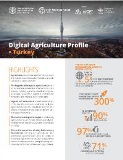
Digital Agriculture Profile Turkey
04/2021
Digital technologies are slowly spreading in agriculture sectors globally. But their adoption is hampered by the digital divide which requires significant public investments, improved policy and incentive frameworks to be bridged. The DAP is meant to assess the country's readiness for this digital transformation by identifying main bottlenecks, opportunities and risks for digital transformation. 2021, 17 p.

Lessons, experiences and proposals
01/2021
This working paper has two main objectives: To provide a comprehensive overview of how the COVID-19 pandemic has been impacting on the digital financial ecosystems of low- and-middle income countries; and, to showcase how digital financial services have been used. 2021, 94 p.

Good practices in the field of digital agriculture - Stocktaking report
07/2021
This Stocktaking Report provides a compilation of the 171 eligible good practices and solutions received from applicants, as well as a mapping of the digital agriculture landscape in Europe and Central Asia. The introductory section describes the Digital Excellence in Agriculture regional contest. The second part provides a compilation of the good practices and transformative solutions collected through the open call. 2021, 197 p.

Good practice series - Digital agriculture
09/2021
The focus of this good practice fact sheet is the experience of a farmer from Albania who has introduced new technologies for the production of vegetable seedlings grown in greenhouses. The document traces the farmer’s journey, from his efforts to research precision agriculture technologies to their practical application on his farm. 2021, 4 p.

Smallholders and family farms in Tajikistan
09/2020
A constraint hampering the development of the dehkan farm is the low profitability of the agriculture sector, despite the fact that this sector as a whole plays a significant role in the economy of the country. Low profitability, frequent price hikes can cause financial planning challenges for smallholders and family dehkan farms. Other interrelated challenges include access to water and the deterioration of irrigation infrastructures that currently need major repairs. 2020, 160 p.

Smallholders and family farms in Serbia
09/2020
Smallholders and family farms in Serbia are numerous and occupy considerable resources. Yet, the characteristics of farm managers are not conducive to the sustained development of the sector. Smallholders and family farms managed by women are, in many aspects, in an even worse position. Access of smallholders and family farms to inputs and services is generally low. Most of the smallholders and family farms in Serbia are active market participants. 2020, 171 p.

Smallholders and family farms in the Republic of Moldova
09/2020
Small-scale farming is a predominant model in the Republic of Moldova, and small farms (including family farms) play an essential role in the country’s agriculture and rural development and in the economy as a whole. Smallholders and family farms generate over 62 percent of the total volume of agricultural produce of the country, thus contributing fundamentally to overall food production and food security in the Republic of Moldova. 2020, 150 p.
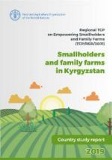
Smallholders and family farms in Kyrgyzstan
09/2020
Agriculture in Kyrgyzstan employs 29 percent of all labour in the country. Its enormous small-scale production ensures the importance of the sector. More than 400 000 business units and more than 700 000 rural households produce over 95 percent of the total agricultural production in the country. This brings positive and adverse consequences. Small farm sizes is a serious problem for the development of agriculture but smallholders are a driving force in the agrarian sector. 2020, 144 p.

Smallholders and family farms in Georgia
09/2020
This report aims to analyse the development trend and current state of smallholders and family farms in the country and to study the current political priorities and policies affecting smallholders and family farms. It provides recommendations, mainly at the policy level, on how to further support the development of commercial family farms in Georgia and at the same time ensure, in general, inclusive growth, improved rural livelihoods, and reduction of rural poverty. 2020, 162 p.
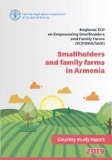
Smallholders and family farms in Armenia
09/2020
Farms in Armenia are small. Around 42 percent of family farms are smaller than 0.5 hectares. The average farm size of family farms in Armenia is 1.48 hectares. Agriculture is one of the most important economic sectors of Armenia. Agriculture is the biggest employment sector in rural communities – 68 percent of the employed rural population were involved in agriculture in 2015. Poverty is a serious concern. 2020, 178 p.

Smallholders and family farms in Albania - Country study report 2019
06/2020
Small and very small farms are up to 2 ha in size, and large farms are those larger than 2 ha. Very large farms are 10 ha or more. Women represent 50 percent of those working in agriculture, but head around 6.5 percent of all farms. Agriculture production is completely dominated by smallholders and family farms, and women and men face different realities and needs. 2020, 164 p.

Support to the implementation of the Regional Initiative on Empowering Smallholders and Family Farms (TCP/RER/3601) - Regional Synthesis Report
09/2020
FAO conducted country studies on the needs and constraints of smallholders and family farms in eight countries of the region. The countries were selected from among those where smallholders and family farms dominate the farm structures and from the various sub-regions so that together they provide a regional overview. The countries covered in the report are Albania, Armenia, Georgia, Kyrgyzstan, Republic of Moldova, North Macedonia, Serbia and Tajikistan. 2020, 166 p.

Gender, agriculture and rural development in Albania
07/2016
The purpose of the Country Gender Assessment of Albania points out some of the major gender inequalities that need to be considered by policy makers and project managers according to available data, and identifies further research needs in a wide range of areas, including fisheries, forestry, local farmer’s cooperation, and women’s real contribution to GDP considering their overwhelming contribution as unpaid family farmers. 2016, 48 p.
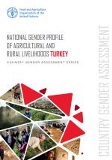
National Gender Profile of Agriculture and Rural Livelihoods: Turkey
09/2016
The purpose of the National Gender Profile of Agricultural and Rural Livelihoods - Turkey is to contribute to the production of knowledge for better informed, targeted and gender sensitive actions in agriculture and rural development. This national profile points out some of the major gender inequalities that need to be considered by policy makers and project managers according to available data, and identifies further research needs. 2016, 72 p.
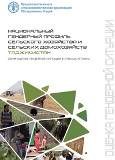
National Gender Profile of Agricultural and Rural Livelihoods. Republic of Tajikistan
06/2016
The purpose of the National Gender Profile of Agricultural and Rural Livelihoods for Tajikistan is to contribute to the production of knowledge for better informed, targeted and gender sensitive actions in agriculture and rural development. 2016, 56 p.

National Gender Profile of Agricultural and Rural Livelihoods: Kyrgyz Republic
06/2016
The purpose of this national gender profile is to collect and compile available data and information from diverse sources in order to shed light on gender disparities in rural settings and the status of rural women across a number of dimensions, with a focus on inequalities in agricultural employment. It aims to provide a picture of the types and degree of the main gender inequalities in agriculture and concerning rural livelihoods in rural Kyrgyzstan. 2016, 68 p.

Gender, agriculture and rural development in Armenia
03/2017
The purpose of the Country Gender Assessment for Armenia is to contribute to the production of knowledge for better informed, targeted and gender sensitive actions in agriculture and rural development, serve as a tool for FAO, and raise public awareness. This Gender Assessment points out some of the major gender inequalities that need to be considered by policy makers and project managers according to available data, and identifies further research needs. 2017, 56 p.

Gender, agriculture and rural development in Georgia
07/2018
This assessment highlights the challenges, gaps and practices in the area of gender and agriculture and rural development in Georgia. These include: the gap between policies, legislation and their implementation; the gender gap in earnings; the vertical and horizontal gender-based segregation in employment; the widespread of gender stereotypes; the rigid division of gender roles and decision-making at all levels, and other systemic issues. 2018, 86 p.
